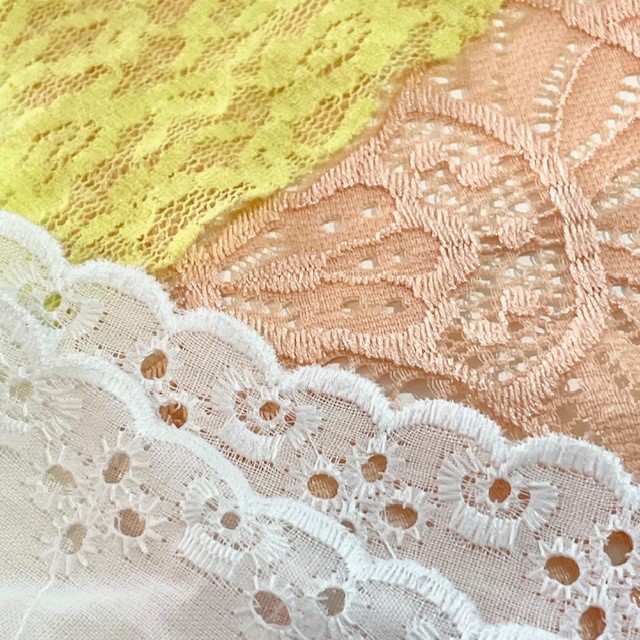
Photo provided by designer.
Who doesn’t love beautiful lace fabric?! This material has the power to remind us of special occasions and nostalgic memories like weddings and proms. While it’s one of the most exquisite types of fabric, lace can be hard to sew due to its delicate nature. In this article, we will describe the uses and types of lace, focus on how to sew it both by hand and by machine, and learn how to care for this unique fabric.
Defining Lace
Lace is everywhere! We see it on formal gowns, wedding dresses and veils, lingerie, home furnishings, and much more. Thought to have been created in Western Europe in the 1500s, it remains as popular as ever. Lace is a lightweight fabric created by manipulating threads (by twisting or knotting, etc.) to create a pattern. It primarily falls into two categories depending on how it is made: bobbin and needle lace. They vary in how the threads are moved around/crossed. Additionally, there is always a negative space in lace, so there are areas or holes where there is no thread and the light or an underfabric shines through. This makes lace perfect for layering over other opaque fabrics for contrast.
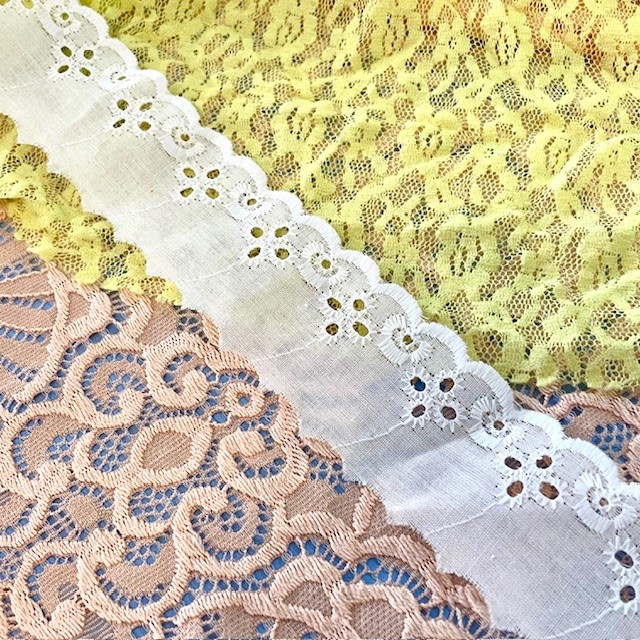
Photo provided by designer.
Traditionally, lace was made with linen, silk, or cotton fibers (and sometimes even gold or silver threads). Modern versions now often include synthetic materials like Spandex to allow for movement, creating the popular “stretch lace.” While most lace today is machine-made and mass-produced, there is a growing movement of lace makers keeping the traditional craft alive. They are creating bobbin and needle laces that are intricate and can take months to complete.
Preparing Lace for Sewing
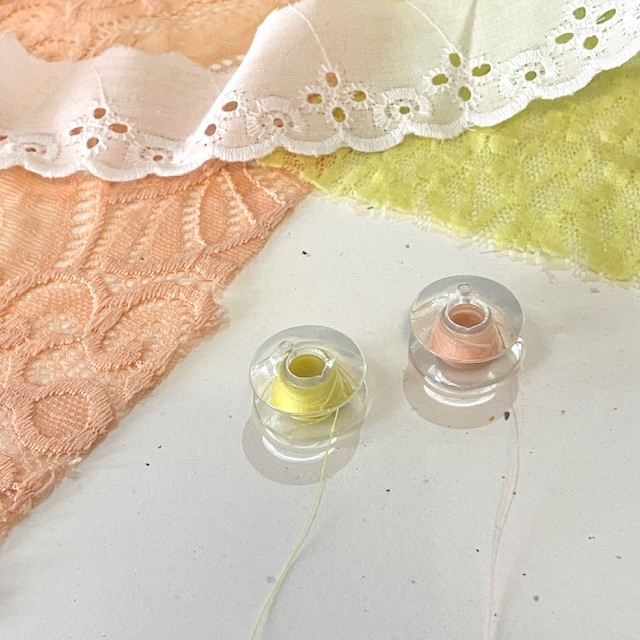
Photo provided by designer.
Preparation of the lace can prevent frustration later on. Whether you choose to sew your lace by hand or with a machine, there are a few general tips for cutting and getting it ready for sewing. Before starting, some people choose to pre-wash lace (but this depends of the situation and material).
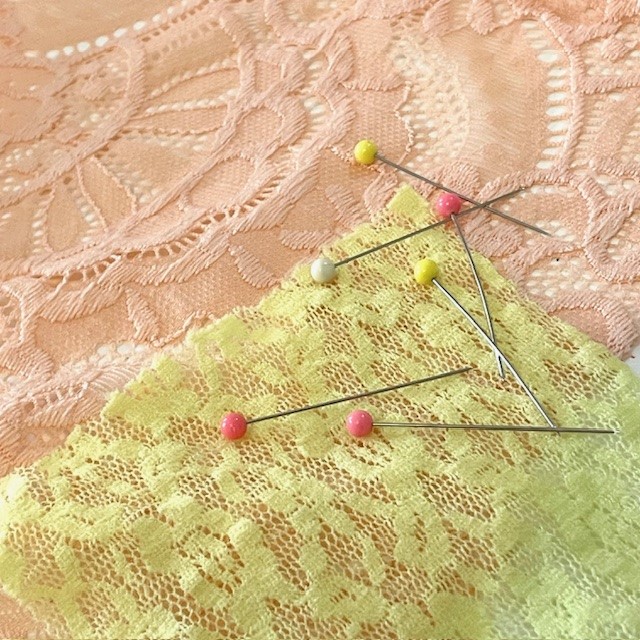
Photo provided by designer.
Don’t cut lace fabric too close to the seam allowance, large design areas, or too short to prevent fraying/unraveling of the design. Lace should also ideally be pinned very minimally to avoid snags, so fabric clips or magnetic pins are a great damage-free choice. Also, when pinning the lace down to cut out or sew, pay close attention to the direction of the design. Many lace fabrics will have a visible print that follows a grain line going in one direction, making the placement of the pattern pieces on lace critical for continuity on a sewing project. There will also most likely be a “right” and “wrong” side, so be sure that the fabric is facing the correct way up.
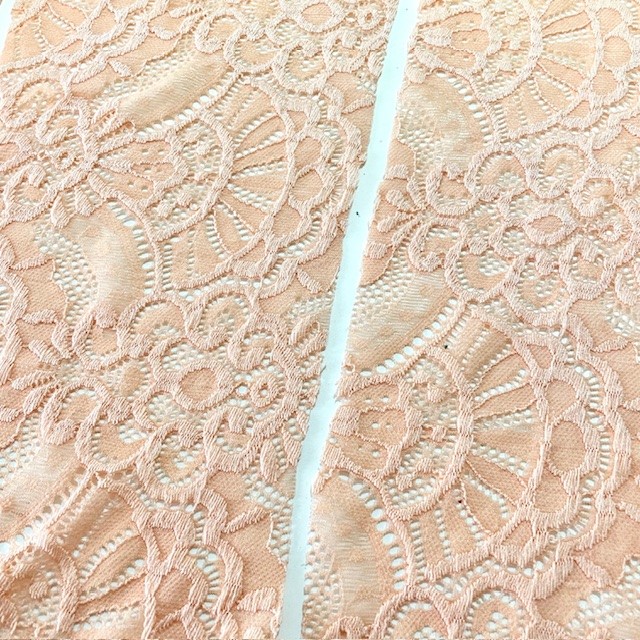
Photo provided by designer.
In addition, when sewing this fabric by machine, you may need to temporarily add stability/strength to the lace. This will prevent it from stretching and distorting, as well as keeping it from snagging under the presser foot. Creating stability in your lace can be done a few ways, depending on the exact fabric. A soluble stabilizing fluid can be used on the material, or you may prefer to use a layer of tissue paper that is later peeled off or washed away. This should be done after the fabric is cut out and before it is ready to be sewn. Whatever method you use, make a sample swatch beforehand to make sure the lace and other fabrics will work with that technique.
Sewing Lace by Hand
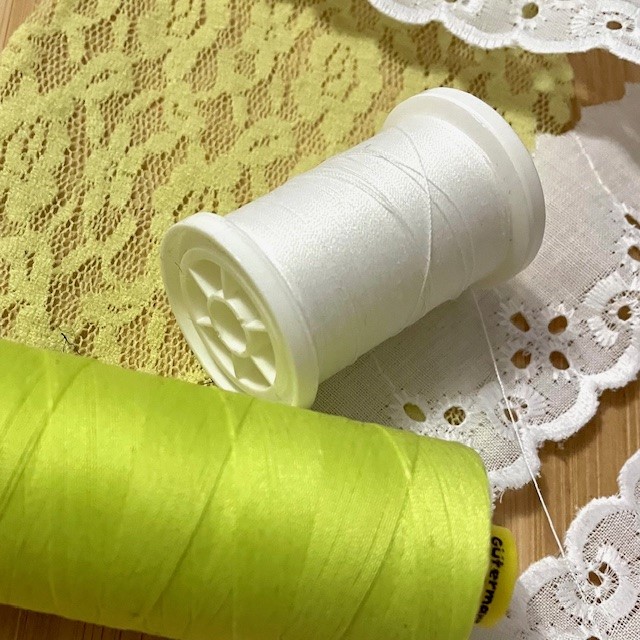
Photo provided by designer.
Most lace embellishments, edging, and other delicate work should be attached by hand. This is recommended if the lace section isn’t very large or if it is highly embellished. Sewing it by hand will give the most control over the placement of the designs and it will be easier to notice any mistakes. It’s also perfect for joining two pieces of lace together invisibly.
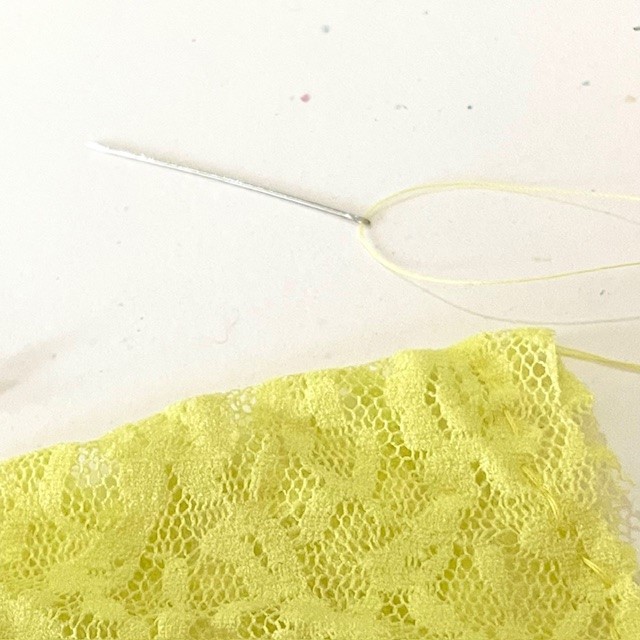
Photo provided by designer.
To sew lace by hand, use a (new) thin, sharp hand needle with a high size number (10, 11, or 12). This will allow it to glide easily though the fabric. The type of thread used here is also key to success. Cotton thread is the most versatile for sewing lace material, though all-purpose polyester blend thread can also work. The cotton fibers will glide smoothly through the lace, allowing for small stitches without snagging. Always choose a thread color that matches the lace to make the stitches invisible!
Sewing Lace by Machine
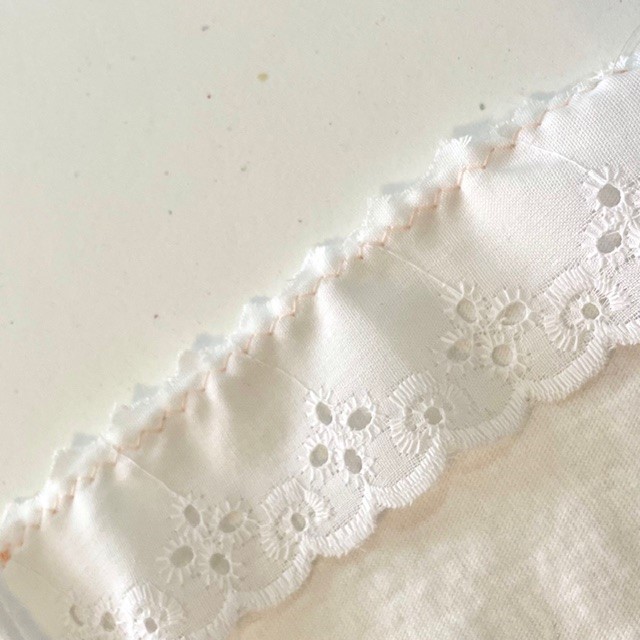
Photo provided by designer.
Many of the same rules apply when sewing lace with a machine rather than by hand. Just as when hand sewing lace, a thin needle and cotton thread should be used in most situations. As for the needle size, a thin universal machine needle (60/8 – 70/10) is most commonly used. Starting with a fresh machine needle is also crucial when sewing lace to prevent any damage or bunching. Because a sewing machine moves so quickly, sample swatches can help you determine the correct settings before using up or damaging your expensive lace.
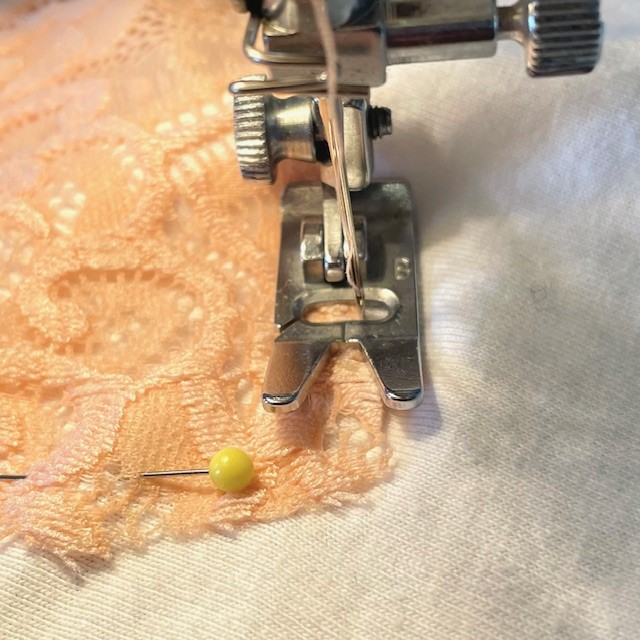
Photo provided by designer.
The stitch selection is also very important! Almost all lace can be sewn onto another fabric with a medium-length and -width zigzag stitch, and occasionally a straight stitch. The zigzag shape will allow stretch lace especially to move slightly while still staying securely fastened. Much like when hand sewing, cotton thread is a popular choice for machine sewing lace. All-purpose thread is also suitable for most projects.
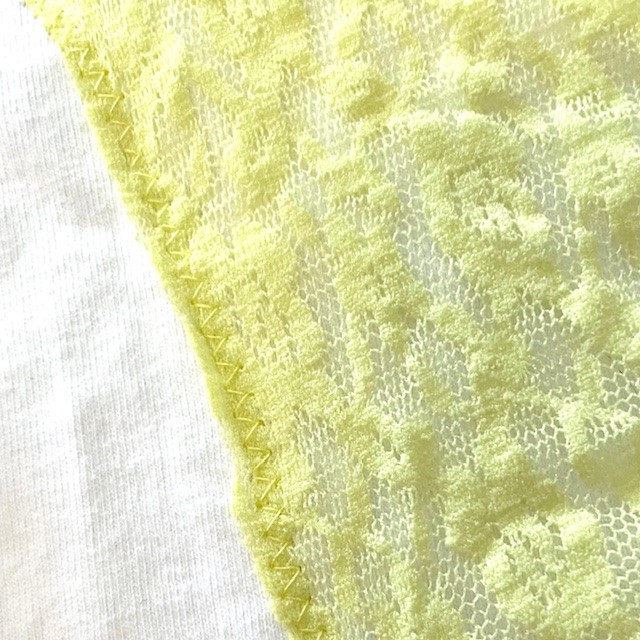
Photo provided by designer.
Ironing and Caring for Lace
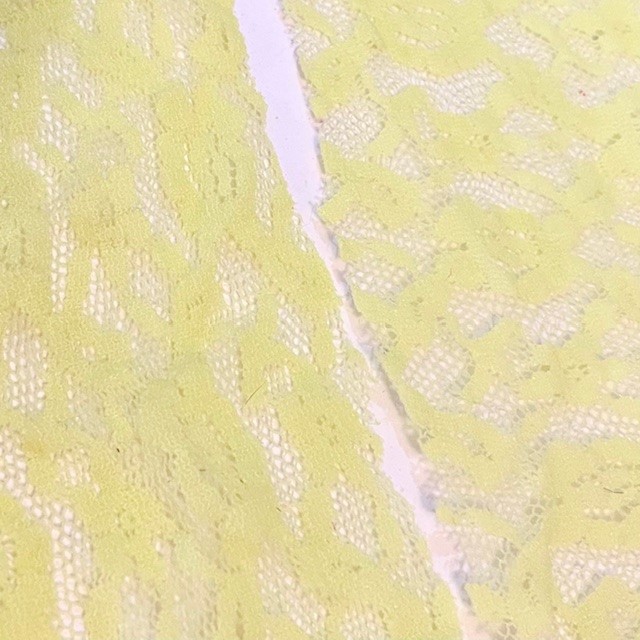
Photo provided by designer.
As with all delicate fabrics, lace should be ironed, cleaned, and handled with care. Be extra mindful not to fray the lace or distort the design by pulling or warping it. When ironing lace, place a soft cloth between it and the iron to prevent melting or discoloration.
Wash lace items in gentle detergent instead of using a washing machine. Blot dry with an adsorbent cloth and avoid clothing dryers. If a garment is very temperamental, dry cleaning might be the best option.
Keep these tips nearby for your next lace sewing project!
